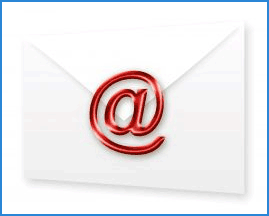
With the massive technological boom over the past decade we have dramatically seen the rise in Email CVs. Sending an email is free, it doesn’t require a stamp, visit to the post office or a trip to the company you’re applying for. It all happens within seconds and with just one click of a button.
So how do you email your CV? We will outline some guidelines that you can use which will increase your chances of having your CV read.
When we’re talking about emailing CVs, we have to consider three major areas:
- What the subject should be of your email
- Which files to attach with your email
- How to write the body of the email
What to write as the subject of the email
The subject of your email should be the job position followed by the job ID or job reference number:- IT Manager (ID: W124)
- Receptionist (Job Ref. A2014)
- Cleaner (Job ID: AFT2421)
What to include as attachments
There are two files that you need to include with your email:- Your CV
- Your Cover Letter
Some applicants tend to write their Cover Letter inside the body of the email but that isn’t the most effective way of doing it. The best method is to include your Cover Letter and your CV as separate files attached to the email.
What to write in the Email body
The content of your email body should be short, informative and to the point:Dear Mrs Sarah Kettle,
Please find attached my CV and Cover Letter for the position of Senior Research Fellow.
I look forward to hearing from you!
Kind regards,
Michael Harper.
Common mistakes to avoid
Mistake #1: Forget to attach your CV and Cover Letter into your email!
The email will read ‘Please find attached my CV and Cover Letter’ but when looking for the files they are nowhere to be found. Do not make this mistake; it can ruin your chances of making a good first impression.Mistake #2: Writing the title in capital letters
Some applicants, in a desperate attempt to make their email stand out from the rest and have the most chances of being read, write the title in capital letters: ‘MARKETING ASSISTANT (REF. A92134)’This is not the best practice, first of all because it is awful to read and secondly (most importantly) you come over as either too desperate or too aggressive (shouting/spamming). In worst case scenario, you come over as both.
Mistake #3: Not appropriately greeting the potential employer
Do not start your email with any of the following opening greetings:- Hello,
- Hey,
- Hi,
- What sup?
Also, do not end your email with the following closing greetings:
- Bye,
- Bye bye,
- Cya
- Goodbye
- Thanks
- Cheers
- {Simply writing your first name without any closing greeting!}
- ‘Yours Faithfully’ when you don’t know the recipient’s name, e.g. ‘Dear Sir/Madam’
- ‘Yours sincerely’ when you do know the recipient’s name, e.g. ‘Dear Mrs Sarah Kettle’
Best regards,
{Your name here}
Kind regards,
{Your name here}
Best wishes,
{Your name here}
Mistake #4: Sending out a generic Email
Sending the same email to dozens or hundreds of potential employers will do you no good at all; in fact, you can be sued for spamming. The best emails are the targeted emails, where the recipient is addressed by name and where the email contains direct information regarding a job vacancy and some relevance to the company.source : cvplaza.com
No comments:
Post a Comment